How do I sharpen a curved knife?
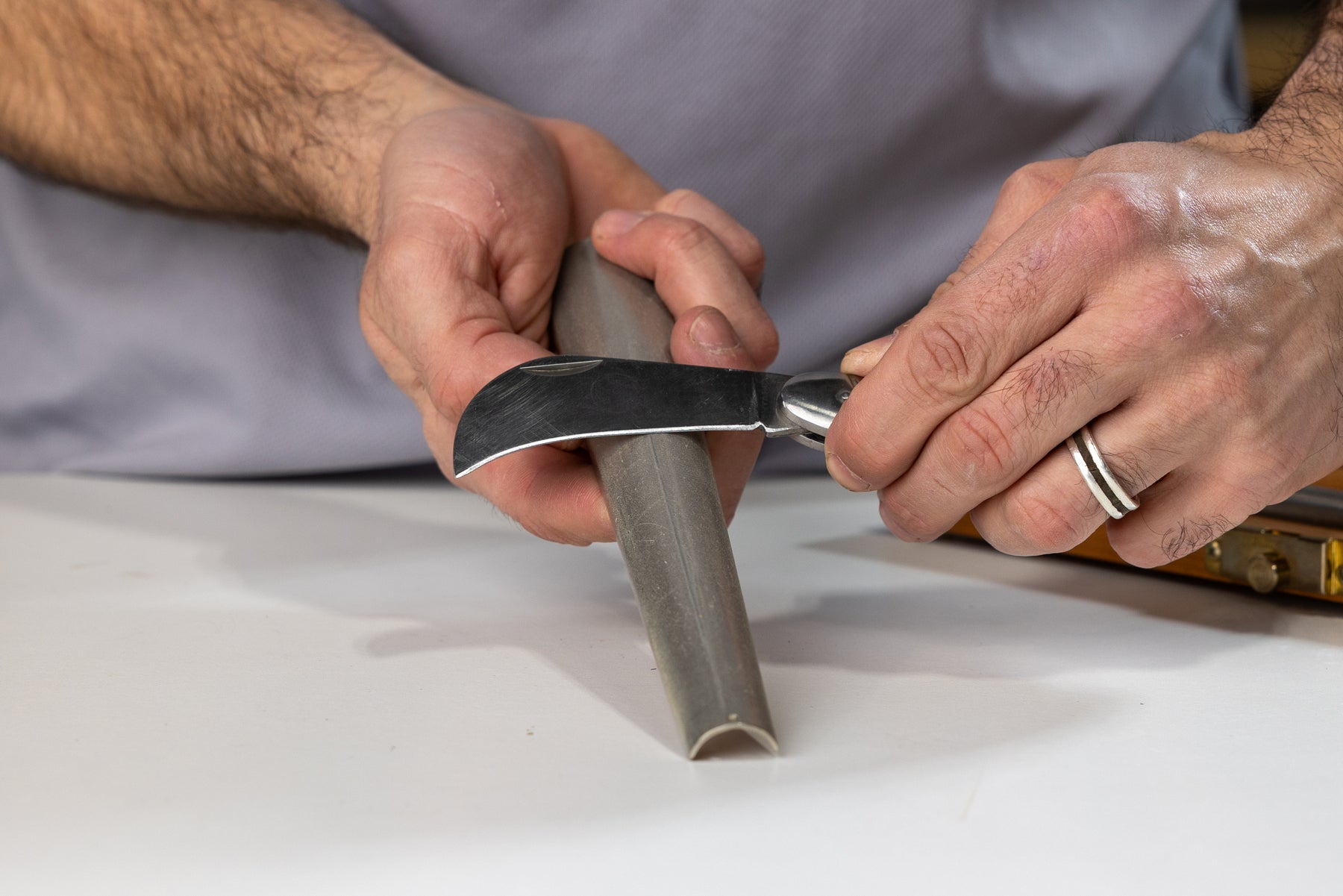
The Ultimate Guide to Sharpening Curved Knives
Curved knives, such as recurve blades and hawkbill knives pose a challenge for sharpening. This comprehensive guide will navigate you through the most effective methods to sharpen your curved knives, ensuring they remain razor-sharp and ready for action.
Understanding Curved Knives
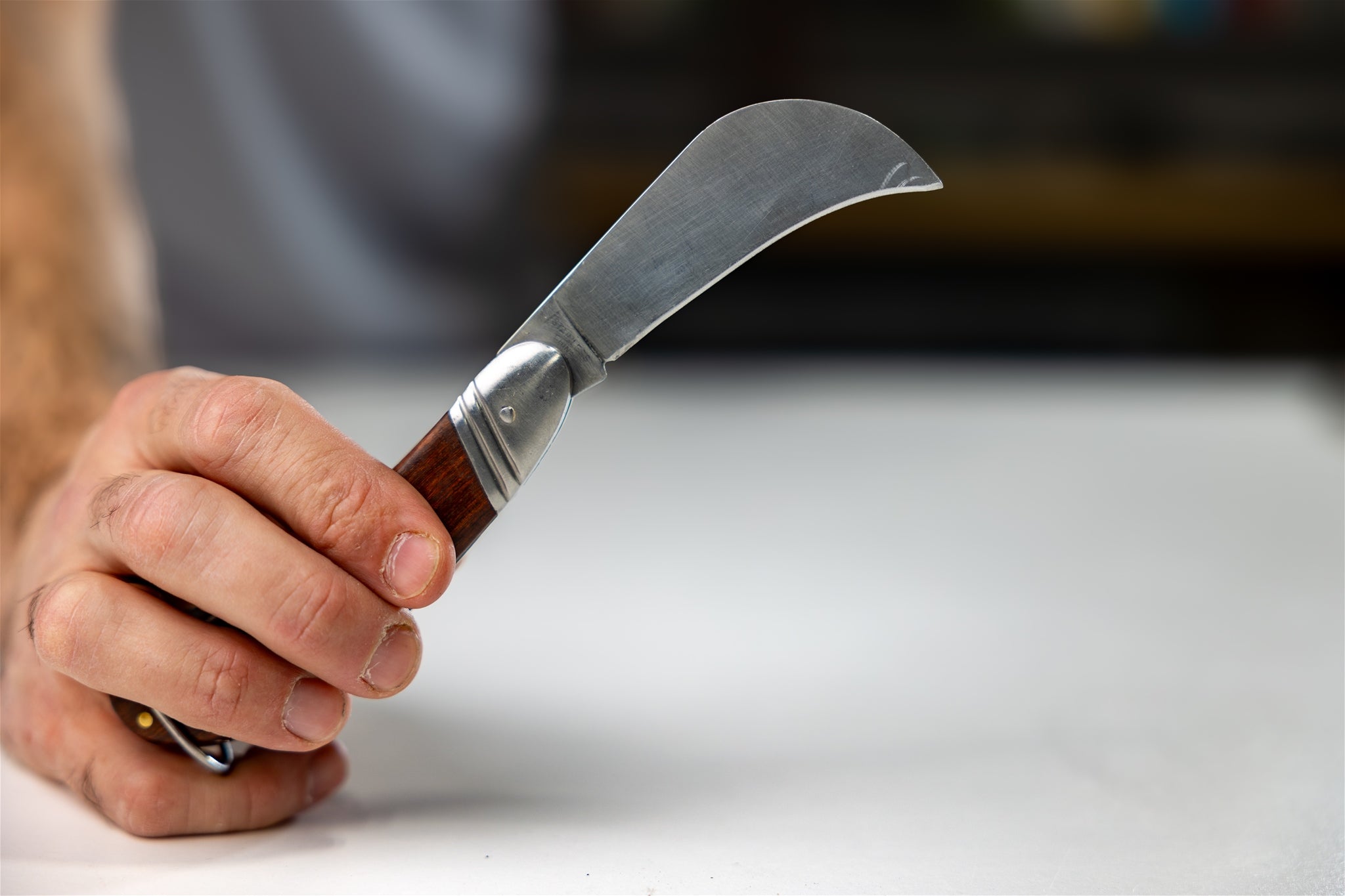
Before diving into sharpening techniques, it's crucial to understand what sets curved knives apart. These blades feature a concave edge, enhancing their cutting efficiency for specific tasks like pruning plants and slicing carpet. However, this design requires special sharpening tools to maintain their edge and functionality.
Recommended Tools for Sharpening Curved Knives
Sharpening curved knives requires tools that can match their unique shape. The surface of a regular bench stone can’t reach the edge inside the curve of these knives. To sharpen your curved knives at home, you’ll need a sharpener that will fit that curve.
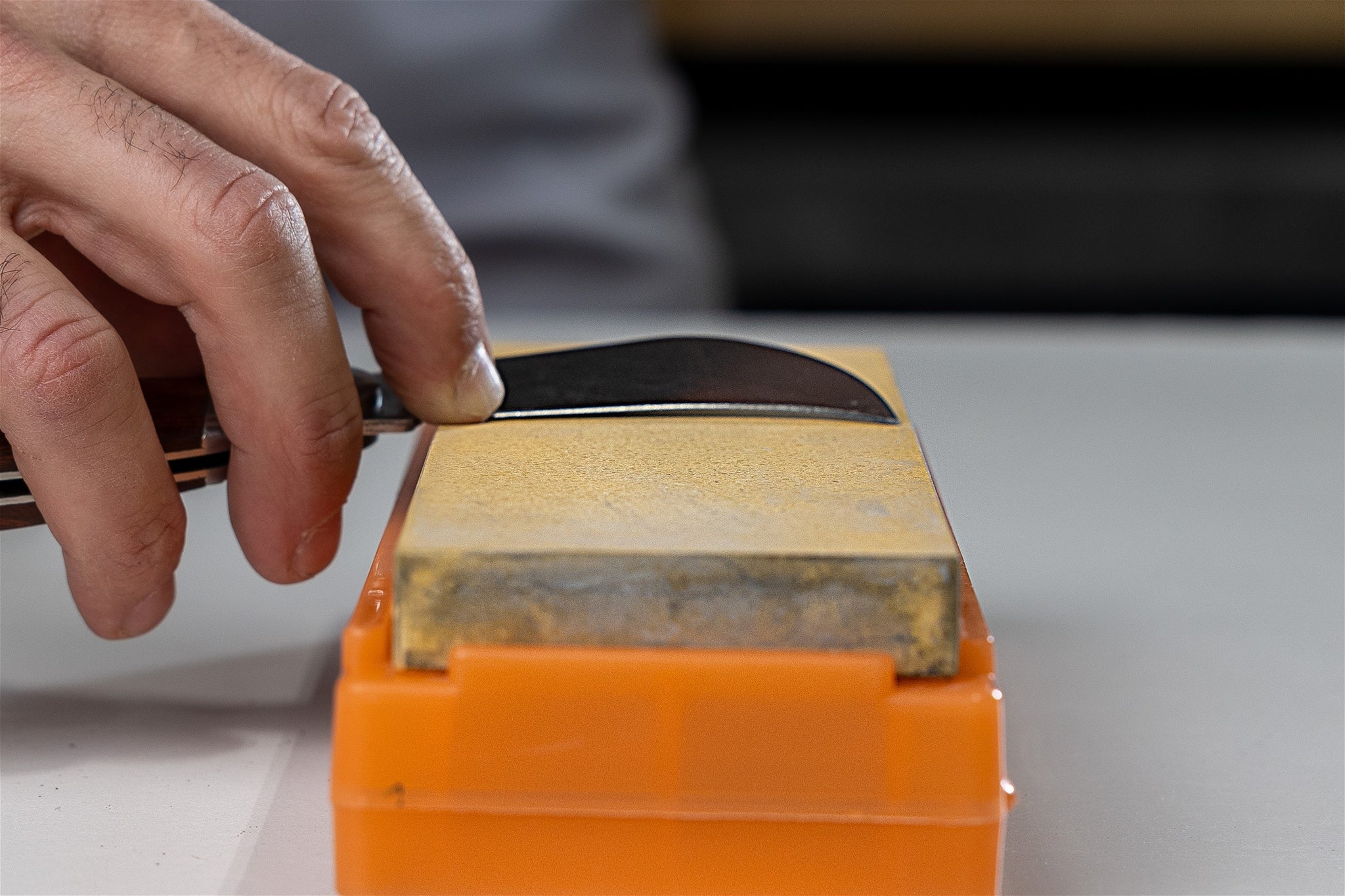
Bench stones are great, but you'll need something a little different for your curved knives.
So long as the sharpener has a smaller radius than your curved knife, it will be able to reach the edge and sharpen it. A smaller sharpener will fit a wider range of curves, but a larger sharpener will be in contact with more of the edge at once. Finding the best sharpener for your needs is a balance.
There are lots of different sharpeners that could work with curved knives, so don’t treat this as a definitive list. You can always contact us if you need more help picking the sharpener that best fits your specific needs. That said here are some recommended tools we think work well for sharpening most curved blades:
- Abrasive Honing Rods: Often seen in the kitchen, honing rods are ideal for maintaining the edge of curved knives. These rods can reach the concave sections of the blade, ensuring even sharpening.
- Flexible Abrasive Belts: Powered sharpeners with flexible abrasive belts that conform to the knife's curve. This method is efficient and quick.
- Specialized Sharpening Systems: These sharpeners come with narrow, round stones that match the curve of the blade.
Step-by-Step Guide to Sharpening Your Curved Knife
The basics of sharpening a curved knife is the same as any other blade. You want to make sure you match the bevel angle and sharpen until you’ve raised a burr along the whole edge on both sides. It’s just the sharpeners that are a little different.
Preparing Your Knife
Inspect the blade for any significant damage, such as chips or flat spots. Starting with the right grit is crucial—begin with a coarse grit if you're repairing damage and move towards finer grits for honing.
Using a Honing Rod
- Hold the Rod Securely: Use your non-dominant hand to hold the rod at a stable angle.
- Find the Right Angle: Match the blade's existing edge angle to the rod.

The Wedgek HXT Ceramic Rod comes with a selection of angle guides to make finding the correct sharpening angle as easy as possible.
- Sharpen with Care: Slide the blade down the rod, away from the handle, in a controlled motion, focusing on maintaining consistent contact with the curved edge.
- Raise a Burr: Continue until you have raised a burr along the whole length of the edge, then flip the knife over and repeat on the other side.
- Refine the Edge: If you started with a coarse grit, repeat the process with finer grits for a razor-sharp edge.
Powered Sharpeners
For those who prefer a more automated approach, a powered sharpener with a flexible abrasive belt can make quick work of sharpening curved blades.

The Work Sharp Ken Onion Elite Knife Sharpening Kit is an incredibly versatile sharpener, able to sharpen a huge range of knives and tools.
- Pick Your Grit: Install a belt with an appropriate grit for the amount of sharpening your curved knife requires. Coarser grits for a duller edge, finer grits for light touch-ups.
- Find the Right Angle: Match the blade's existing edge angle to the belt.
- Smooth Movements: Keep the knife in motion across the belt. Lingering too long in one spot can lead to uneven sharpening. Sharpening one spot for too long can also overheat the edge, which can soften the steel.
- Raise a Burr: Continue until you have raised a burr along the whole length of the edge, then flip the knife over and repeat on the other side.
- Refine the Edge: If you started with a coarse grit, repeat the process with finer grits for a razor-sharp edge.
Specialized Sharpening Systems
Lansky Curved Blade Hones
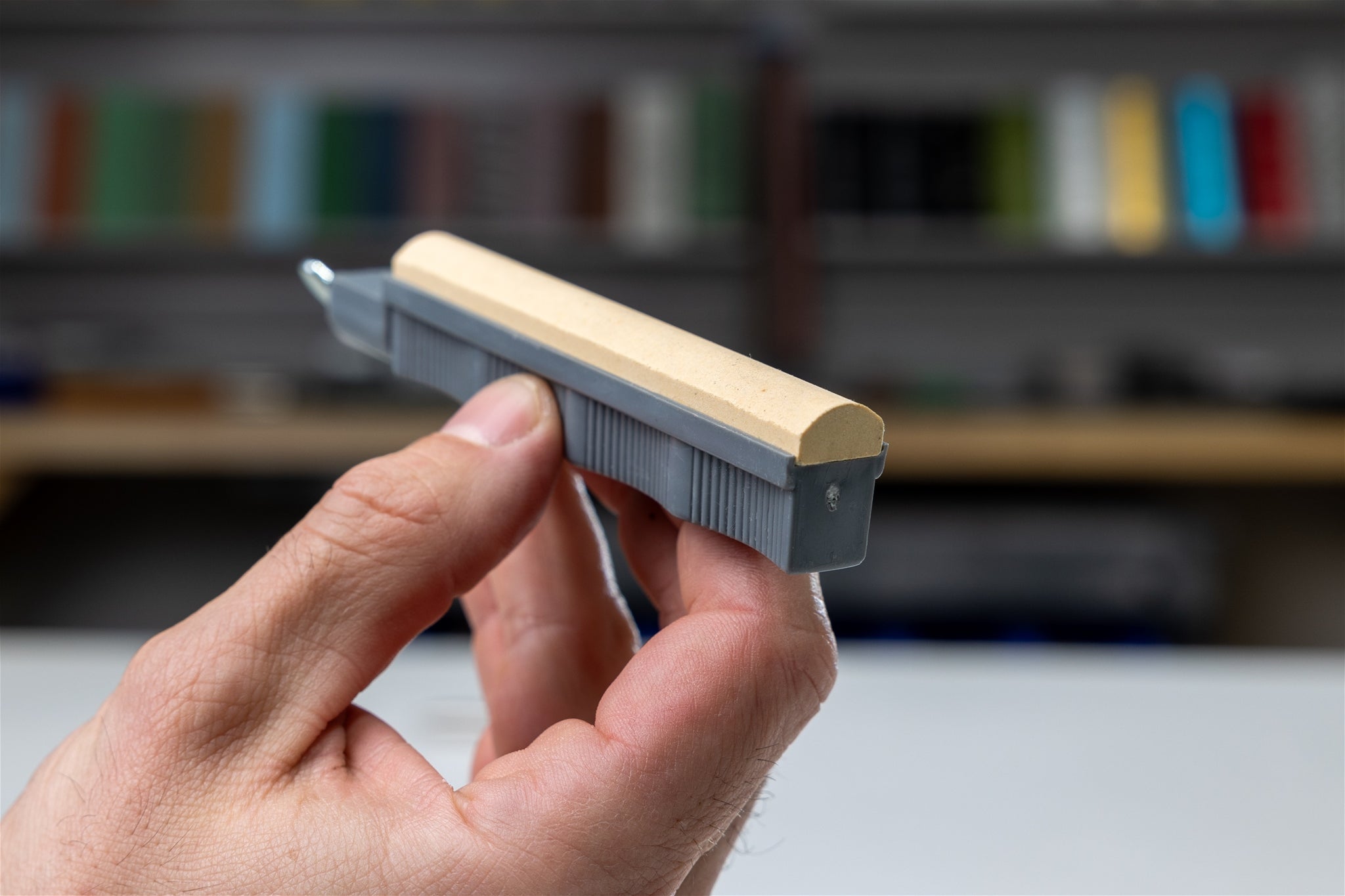
The Curved Blade Hones work as part of the Lansky system. Simply attach them to the guide rod and insert them into the appropriate angle selector. Secure your knife in the clamp and sharpen it.

The Curved Blade Hones are a great way to expand the usefulness of your Lansky sharpening system.
DMT Diamond Cone Kit / Naniwa Gouken Curved Water Stones
The Naniwa Gouken Curved Water Stones should be soaked before use. The DMT Diamond Cones will benefit from having water applied to prevent them from becoming clogged with swarf.
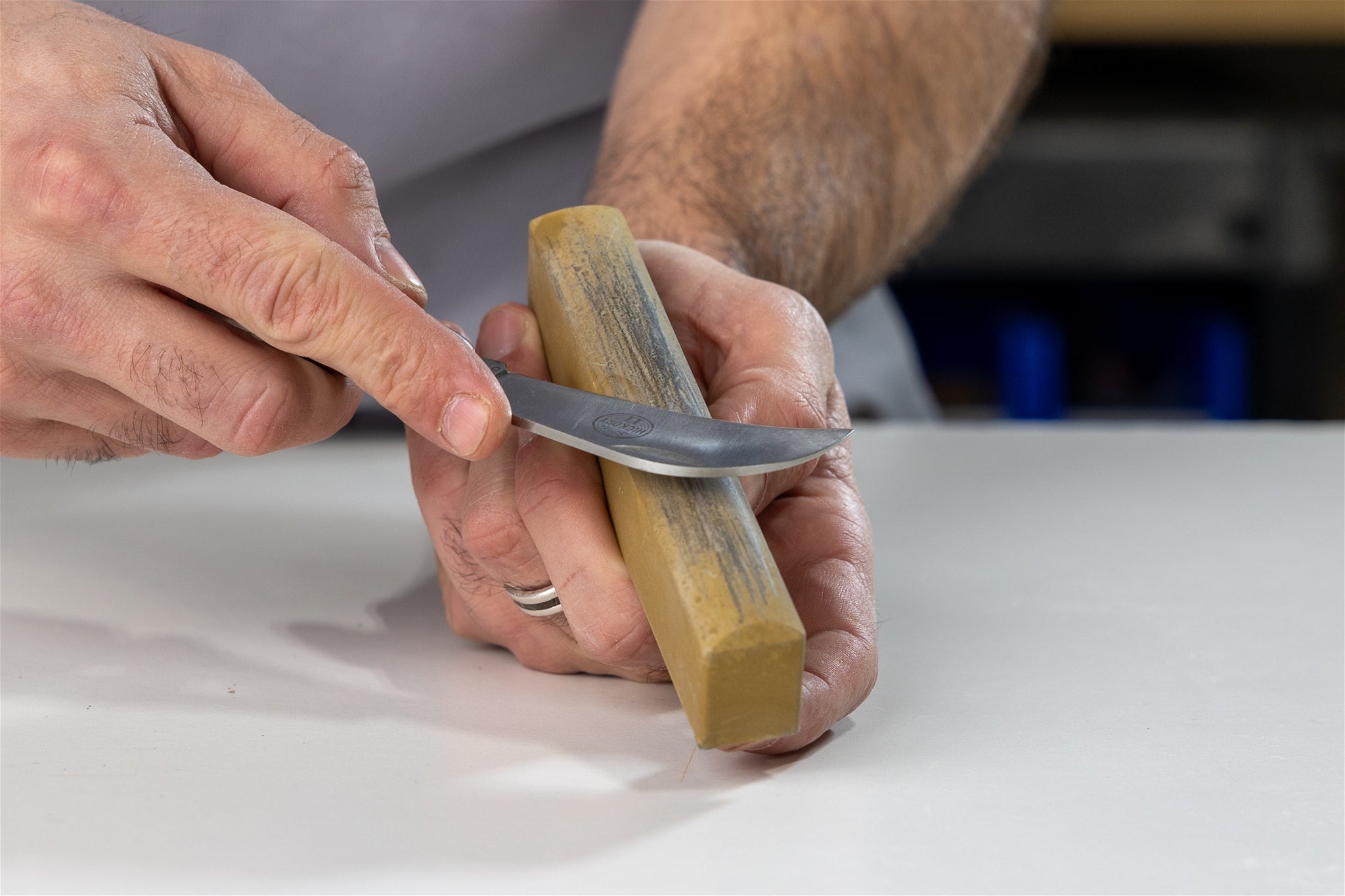
The Gouken water stones are great for sharpening curved knives and a variety of other garden tools.
Since you are holding the stone, it will generally be safer to sharpen moving away from the edge. Holding the knife at the appropriate angle, move the knife back and forth along the surface of the stone until you raise a burr. Flip the knife over and raise a burr on the other side.
The Gouken stones come in multiple grits, so start with the coarse 220 grit and work your way through to the fine 3000 grit for a razor edge. All three of the DMT Diamond Cones are a Fine 600 grit.
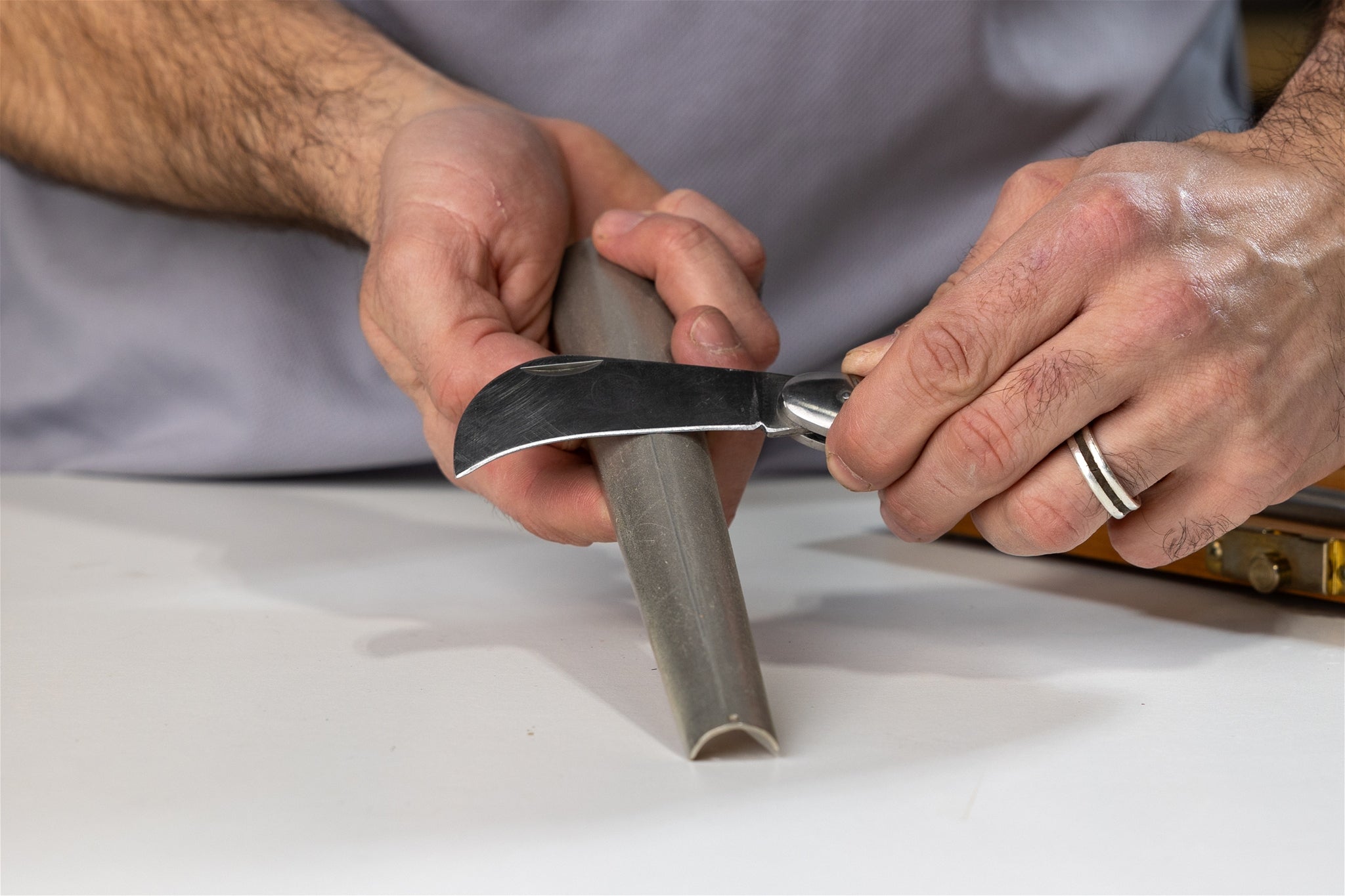
The DMT Diamond Cone Kit has three sizes to sharpen any curved knife. The Diamond Cones can also be purchased individually.
Lansky Turnbox / Spyderco Sharpmaker
Both sharpeners have abrasive rods set into a base at particular angles. The Lansky Turnbox has the option of sharpening at 20 or 25 degrees, the Spyderco Sharpmaker has the option of sharpening at 15 or 20 degrees.
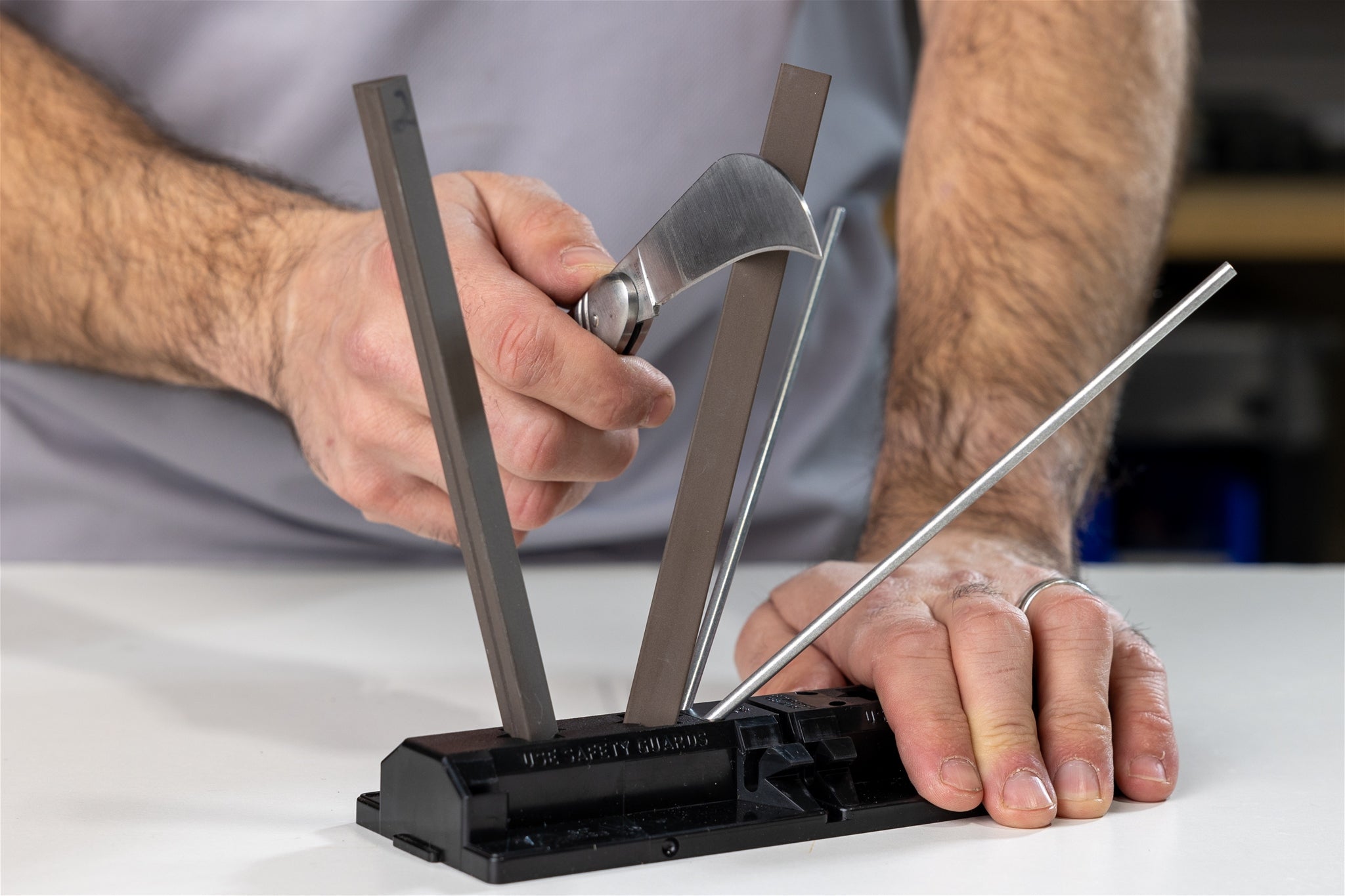
The corners of the Spyderco Sharpmaker rods will sharpen curved knives and can also be used to sharpen serrated knives.
Hold the knife vertically and run the edge down the rods from the top to bottom. Continue until you’ve raised a burr then use the other rod to sharpen the other side of the knife. Both kits include a set of medium and fine rods.
Stropping
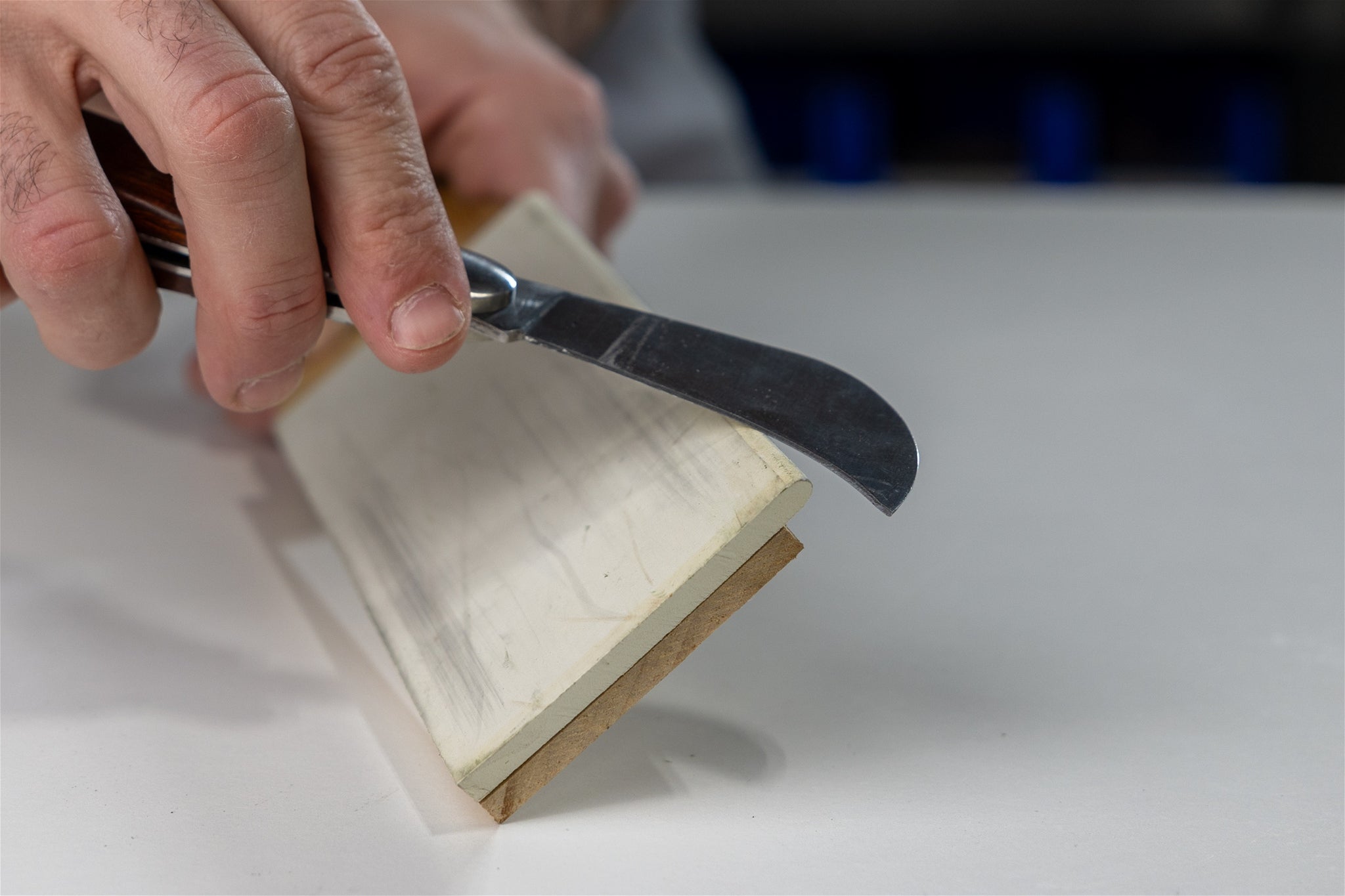
The profiled edges of the Wood Is Good large strop are great of curved knives and curved woodworking tools such as gouges.
Finish the sharpening process by stropping the blade to polish the edge and remove any burrs. For curved blades, use the strop's corner with minimal pressure to avoid rounding off the sharp edge. If you’re careful, you can use the edge of a regular mounted strop. If you find yourself sharpening curved blades often, these synthetic strops include profiled edges that make reaching the inside curve a lot easier.
Sharpening a curved knife requires patience, the right tools, and a careful approach. Whether you're maintaining a cherished pruning knife for gardening or a curved paring knife for peeling vegetables, the proper sharpening equipment will ensure your knife remains an effective and reliable tool. Invest in quality sharpening tools and practice your technique to keep your curved knives in top condition.
This article highlights a few of the options available for sharpening your curved knives. If you’re looking for something slightly different, then check out more options here. Otherwise, you can contact us and our Sharpening Specialists will help you find the perfect sharpener for your specific needs.

